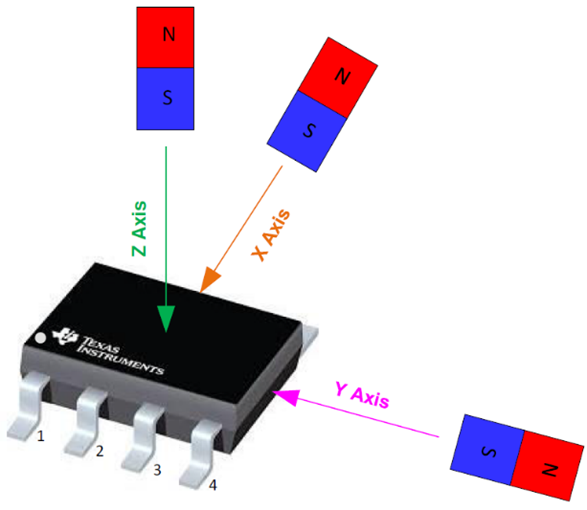SBAA577 March 2023 TMAG5170 , TMAG5273
3 Different Types of Hall-Effect Sensors
TI offers several different types of Hall-effect sensors: latches, switches, 1-axis linear, and 3D linear sensors. Linear sensors can provide detailed magnetic data since they represent the magnetic field strength using an analog voltage or a digital numeric representation. The voltage or numeric representation changes as the field experienced by the device’s changes. Using these values, the distance can from the hall sensor to the magnet can be easily calculated. This makes linear Hall-effect sensors extremely useful for proximity sensing applications. Unlike single axis sensors, 3-axis or 3D linear sensors can use the magnetic field data from all 3 directions to calculate angle and magnitude. The three axis of sensitivity of a 3D linear Hall-effect sensor are defined as shown in Figure 3-1.
 Figure 3-1 3D Hall Sensor Axis
Figure 3-1 3D Hall Sensor AxisAt the time of this article TI offers two types of 3D linear Hall sensors, one with an I2C interface the TMAG5273 and the other with a SPI interface the TMAG5170. Each of these 3D Hall sensors provides multiple magnetic range options that can benefit different use cases and different environments. For example, if the sensor is placed near a high-current cable, or besides running motors, a high magnetic field can be generated by these other devices. Using a different magnetic range option can yield a better SNR (signal-noise rate).
Compared with mechanical or IR switches, Hall-effect sensor are more reliable, and they are minimally affected by environment changes like temperature, humidity, dust, or water.